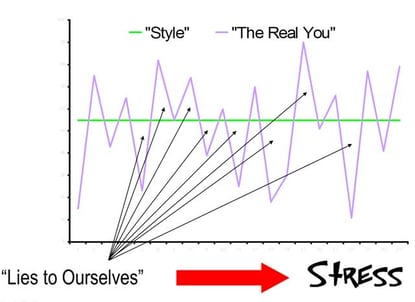 I was talking recently with someone in a large organization working from home with a remote work team (both direct reports and a boss) spread across multiple geographies. While that would have been extremely rare once, these work team dynamics are now common.
I was talking recently with someone in a large organization working from home with a remote work team (both direct reports and a boss) spread across multiple geographies. While that would have been extremely rare once, these work team dynamics are now common.
If you’re part of a remote work team, how do you signal to other work team members what’s going on, what you’re working on currently, and collaboration opportunities? How do you also signal to a boss you are actually working and not goofing off (always one of my big concerns whenever I would work from home while in the corporate world)?
9 Ways to Signal Remote Collaboration Opportunities and Improve Work Team Dynamics
Although new online collaboration tools are being introduced all the time, here are nine workplace behaviors (regardless of the online collaboration tools you use) to signal and create stronger collaboration opportunities within your work team:
- Take time to understand communication styles within your work team, and let work team members know your preferences as well.
- Pick up the phone and call (okay, even text) proactively at both expected and unexpected times. This signals both routine and keeps everyone guessing – in a good way.
- Prioritize responding to team members. While it is a good idea to not continually interrupt yourself (or allow others to do it to you), quick email and phone responses to bosses and co-workers signal your head is definitely in the game.
- Provide brief, informal updates with high regularity. And by updates, I do not mean endless cc’s or bcc’s to others. Add value to recaps, highlighting only what the other person needs to know to continue their work in a consistent and expeditious manner relative to your progress.
- Make your calendar available for others to see.
- If you have a direct phone line that is not mobile, transfer it to your mobile phone when you are away.
- Do not presume someone knows what you are working on right now and strive to eliminate surprises. I had a boss with only two rules, one of which was “no surprises.” This simple rule always helped to know what, despite his extensive travel and frequent unavailability, required an update. Acting as if a version of the “no surprises” rule is in place is much better than continually waiting for the other shoe to drop.
- Create evidence whenever you work at odd hours or perform extraordinary work activities. Don’t fudge on this one, but whenever appropriate, send late night emails, reference having thought about (or worked on something) over the weekend, and share a brief story of a challenge you conquered. These behaviors let others know your contribution to the team is there even when they can’t see it.
- Be judicious in using social media. While I have social media platforms on all the time now, when I was in a corporate gig, I would only share Brainzooming or other personal content in clear non-work hours. There were too many people who might misconstrue social media activity during work hours.
2 Rules to Follow
There are two important rules underlying all these suggestions:
1) You have to actually be doing the work and putting in the expected effort.
2) These rules are not about deception, but simply providing signals to co-workers that you not only are moving forward on projects, but also have their backs when they need it.
What ?
Are you working with a remote work team? If so, what signals do you provide to work team members to stay in sync? - Mike Brown
The Brainzooming Group helps make smart organizations more successful by rapidly expanding their strategic options and creating innovative plans they can efficiently implement. Email us at info@brainzooming.com or call us at 816-509-5320 to learn how we can help you enhance your strategy and implementation efforts.



